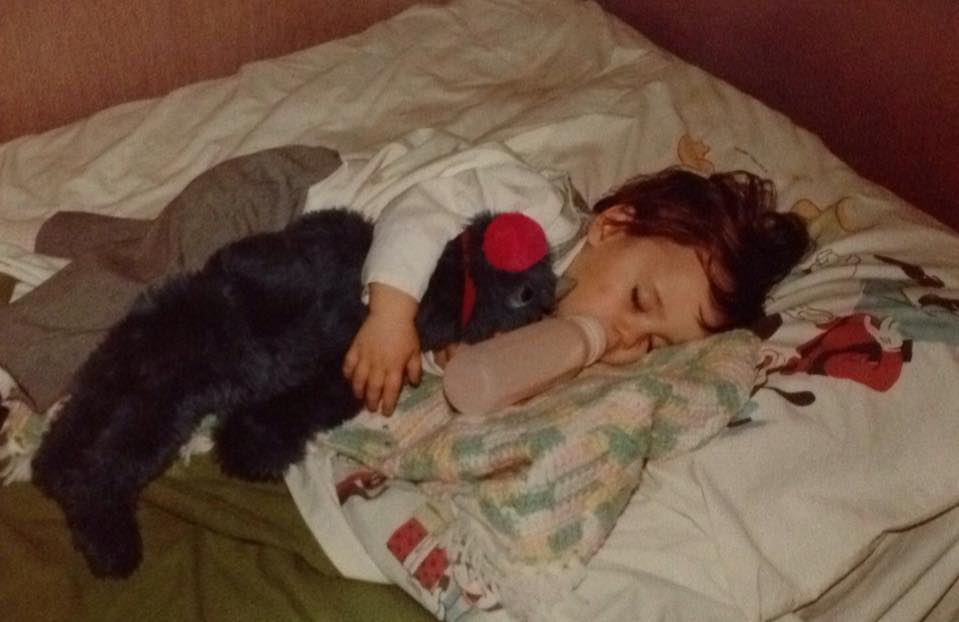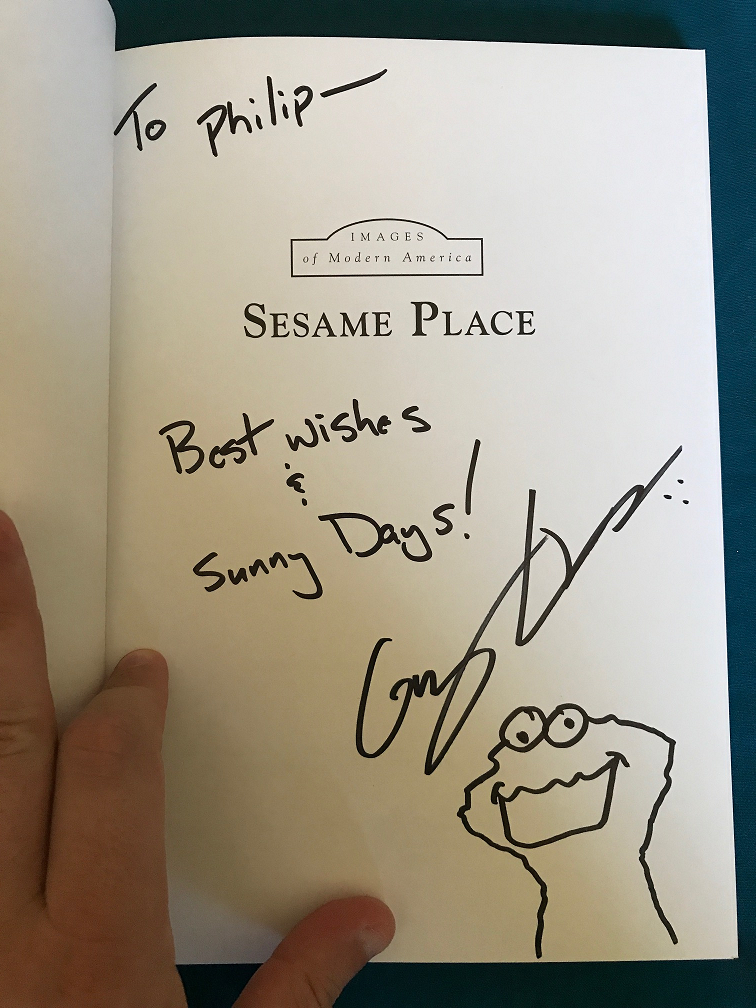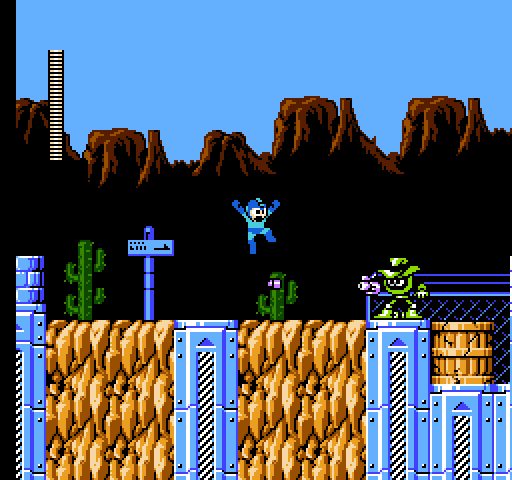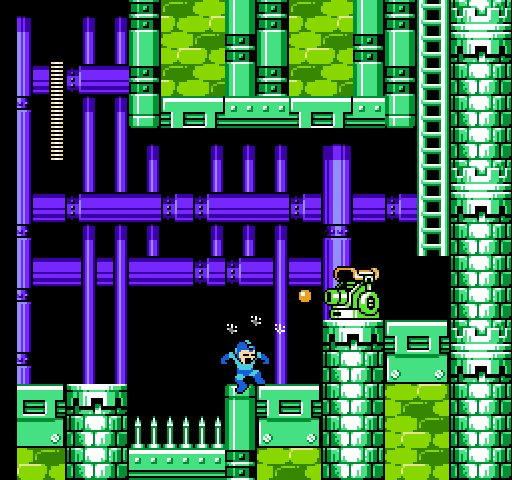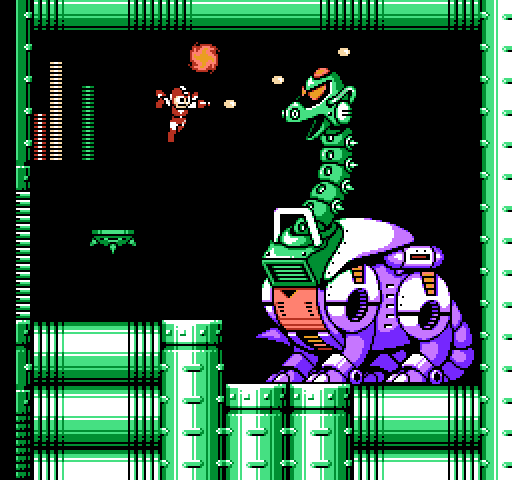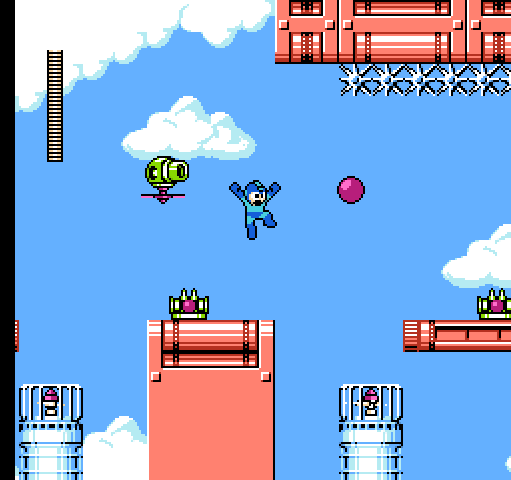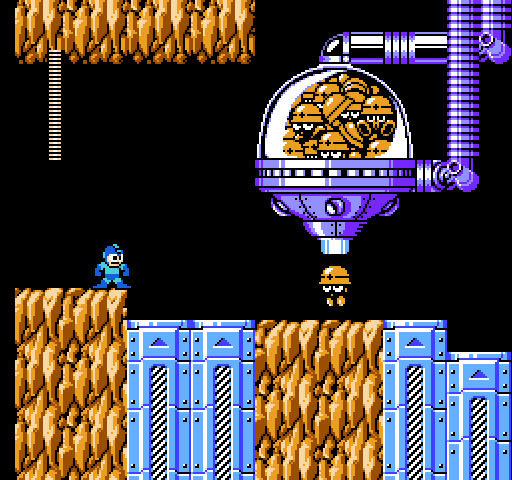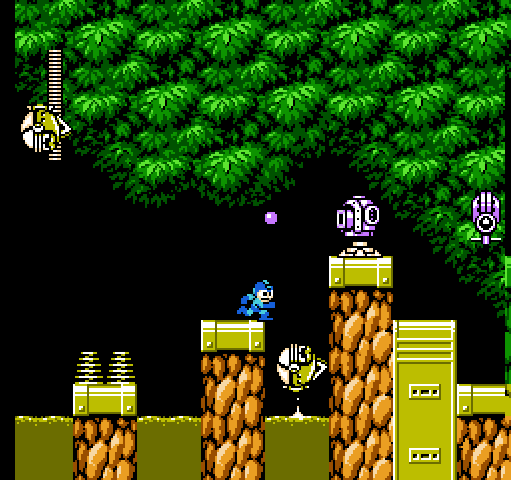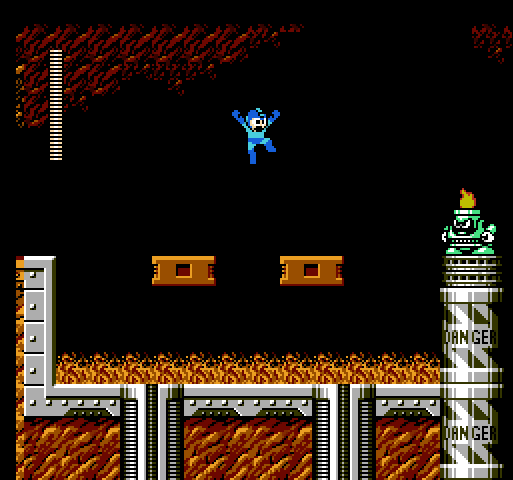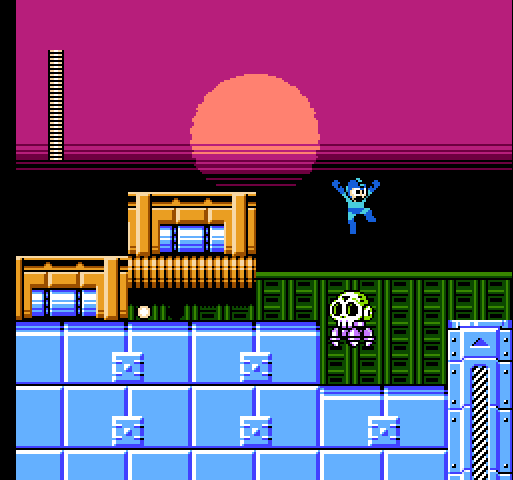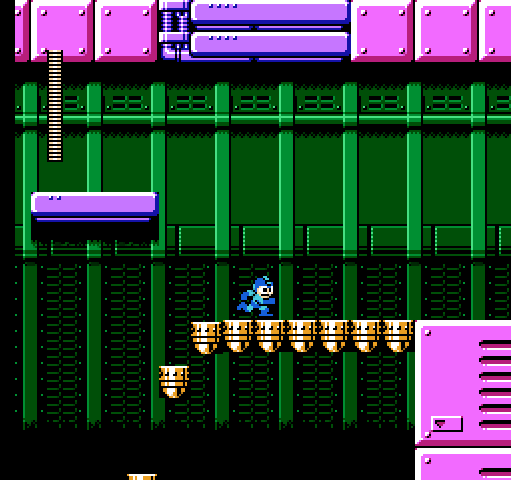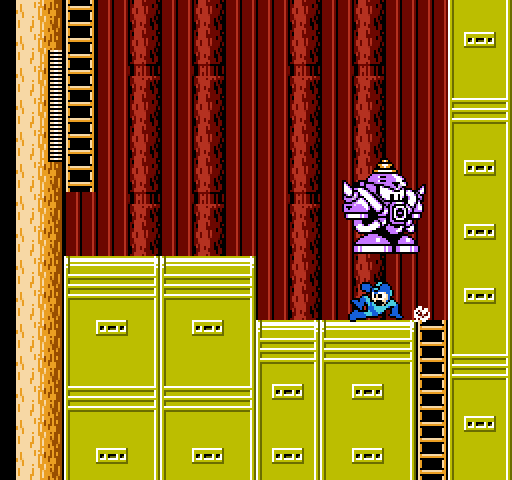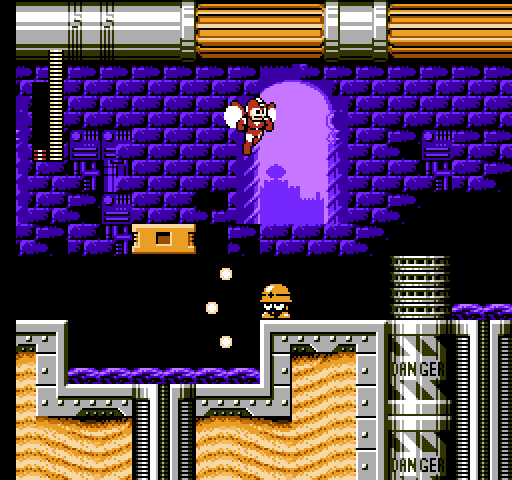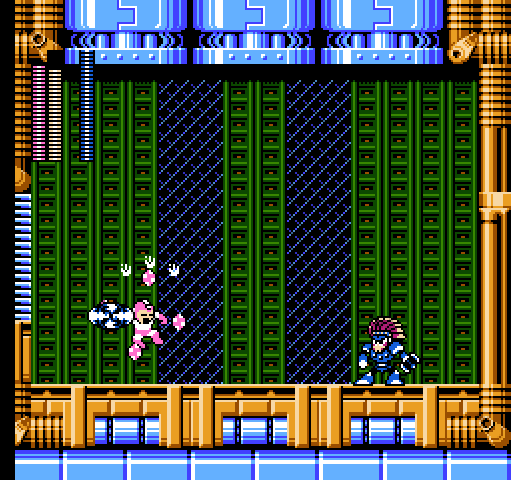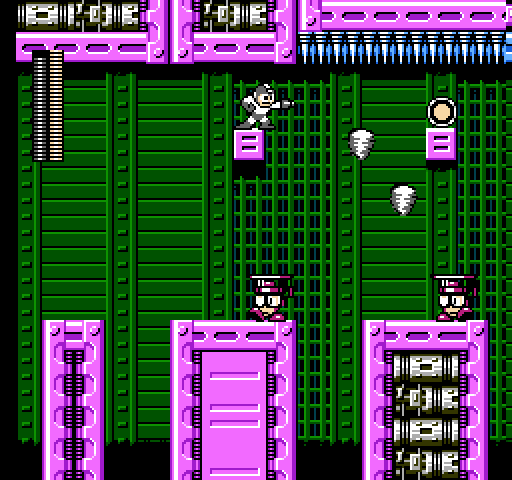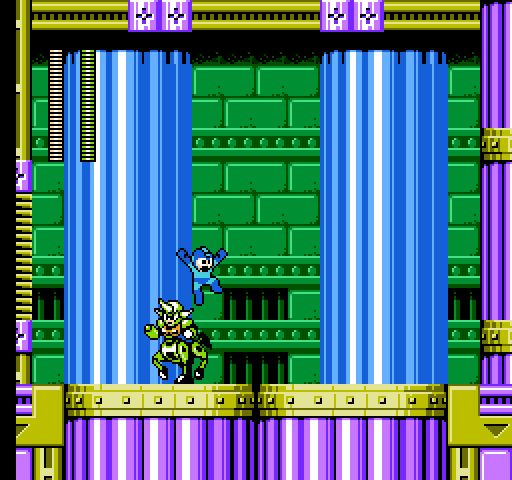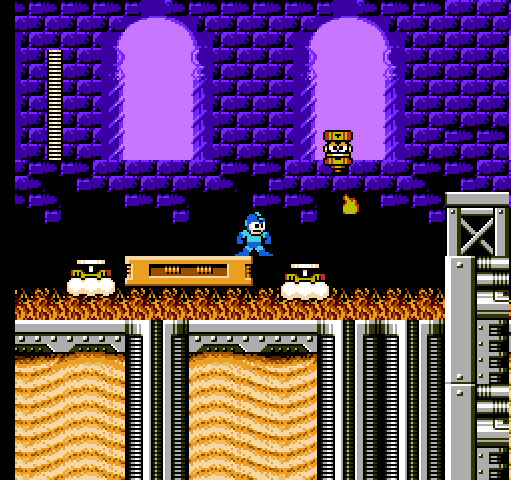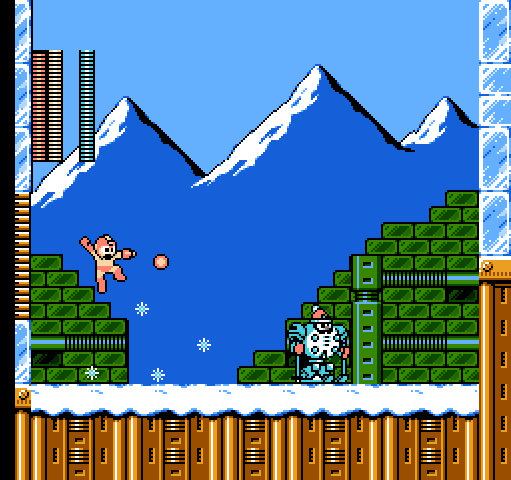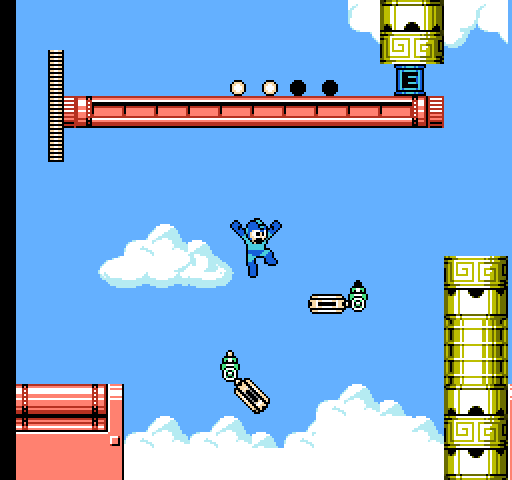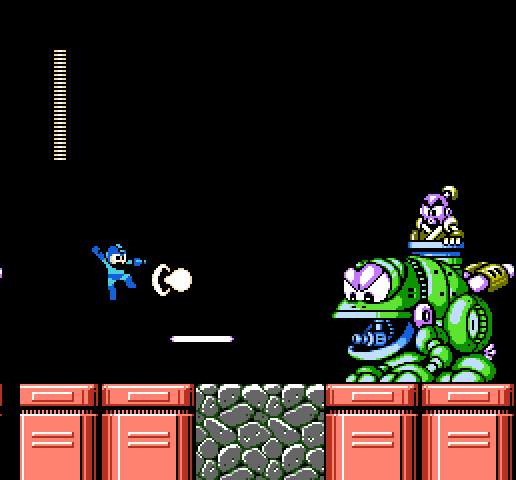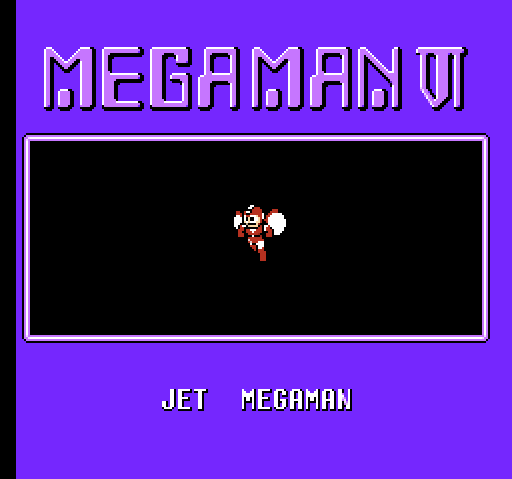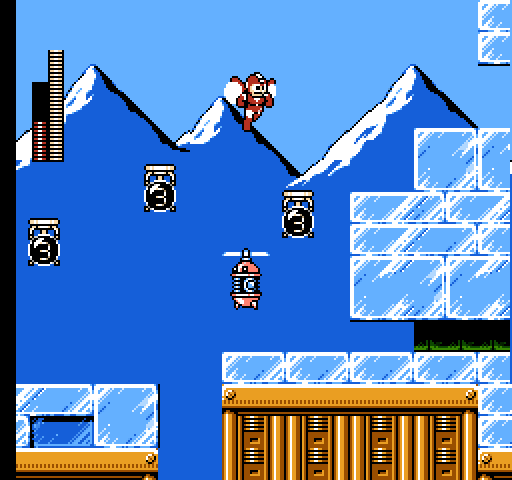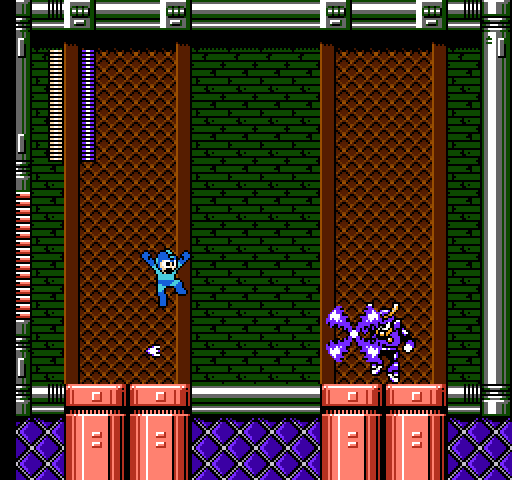
Here I go, here I go, here I go again. Girls, what’s my weakness?
ALF!
Okay then.
One year ago, almost to the day, I finished reviewing ALF, and I solemnly swore upon the life of my mother that I’d never return to it, for any reason.
But, well…sometime during the series, someone asked me to review “ALF Loves a Mystery,” a one-off special that aired between seasons one and two of the sitcom. I agreed…and then never actually did it. I don’t remember who it was, but hopefully they’ll see this and realize that I’m not a giant dick who breaks his promises. I’m a slightly smaller dick who ignores his promises for several years and then fulfills them when you no longer care.
So, yeah, I’m back to take care of some unfinished business. (Sorry, ma!)
“ALF Loves a Mystery” is one of those Saturday morning preview shows. You probably remember them. That’s when Carl and Urkel would sit on the couch and show clips of the new season of Muppet Babies. (Casey recently reviewed one of these starring the most perfect strangers imaginable.) I remember enjoying these very much, and while I wouldn’t have much interest in watching it if the concept were brought back today — with Jimmy and Chuck McGill getting unnaturally enthusiastic about the new Teen Titans spinoff or something — back then it was great.
These things served as a really great sampler of that year’s new batch of Saturday morning cartoons, and, man, I sure as hell loved Saturday morning cartoons. I have vivid memories of waking up as early as I could and plopping myself in front of the TV to watch whatever happened to be on. In a way, I almost didn’t care what the shows were; I just loved cartoons. They were a fun and colorful escape, as I’ve discussed before, which is probably why I gravitated toward ones that were very fun and colorful, as opposed to ones that felt more…serious, like Transformers or G.I. Joe.
I didn’t care about that stuff. I liked talking animals and silly adventures. Sue me.
I specifically remember watching one of these preview specials and catching my first-ever glimpse of Darkwing Duck. That was the first time I was actually sold on a specific show. Seeing the extra-long clips of Darkwing Duck — which ABC was clearly, correctly banking on to be a hit — made me actively want to watch it. It looked like a really fantastic evolution of the Duck Tales formula, and, as I recall, it was an experiment that worked extremely well. It became one of my favorite shows, and while I haven’t seen it at all as an adult and can’t exactly vouch that it holds up, I still look back on it with fondness.
While I might have stumbled upon the show at some point on my own, I credit the ABC Saturday morning preview special with introducing it to me, giving me an early taste of something I’d unquestionably love, and exciting me enough that I’d jump in with the very first episode.
So, without further ado, let’s begin my reviews of Darkwing Duck.
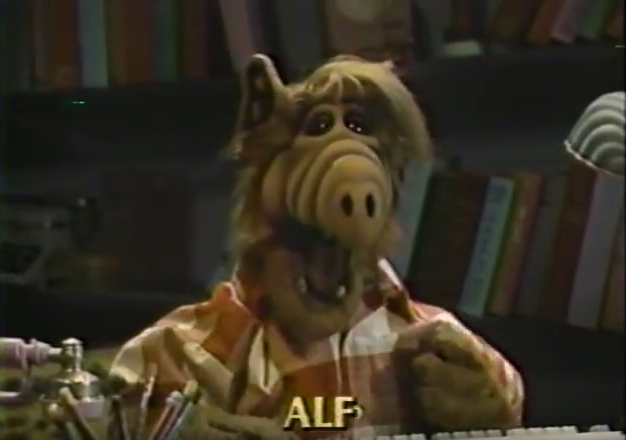
Oh, wait. This shit.
You guys sure you don’t want to talk about Darkwing Duck instead? It was pretty funny. It was sort of a Batman parody, and…
Okay, okay, fine.
“ALF Loves a Mystery” was NBC’s 1987 Saturday morning preview special. You can follow along with this YouTube video if you enjoy the works of Paul Fusco and/or VHS artifacting.
Just kidding. Nobody enjoys the works of Paul Fusco.
See, normally — if memory serves — these preview specials would have characters from popular live-action shows sitting around, watching clips of upcoming cartoons, and delivering basic scheduling information about them. It was framing material, basically, and while there might be a vague sketch of a plot or a running joke, it was a pretty low-effort affair.
They were fun to watch, don’t get me wrong. But if you loved Full House you wouldn’t see its Saturday morning preview special as an extra episode or anything. It would just be Joey and one of the kids dicking briefly around on a sofa between clips of Denver, The Last Dinosaur.
This special is a bit different. It’s a mystery, after all. And…I love a mystery! Sure, I hate the living fuck out of ALF, but this seems to have some narrative effort invested in it, by preview special standards.
Maybe I’ll actually like this!

…oh for the love of fuck. Let me be optimistic for FIVE SECONDS PLEASE?
Yeah, see…
Typically in these specials, you don’t get the full cast of whatever show is providing the framing material. You’ll get two characters, possibly three, in an effort to produce these things quickly and inexpensively.
That’s fair. There’s no need to bring the whole extended family along if what you’re filming amounts to around five minutes’ worth of bumpers.
So, no, I didn’t expect to see the entire cast of ALF. What’s more, I never, ever want to see the entire cast of ALF again for any reason.
But if ALF was to be paired with just one family member from that show…why in the name of shit did it have to be Brian?
I mean, holy Christ. Whose kid did I dismember in a previous life that I need to sit through a fucking ALF-and-Brian special? I’d rather ALF was paired with a dishmop.
Y’know, now that I think about it — and now that I’ve tapped into my vast reserves of immense hatred — I don’t think “ALF Loves a Mystery” is attempting unique narrative* for the sake of being interesting or artistic or anything else. I think it’s because that’s one more way for Paul Fusco to kick his fucking colleagues out of the picture.
When ALF got a cartoon show, it was a prequel so he wouldn’t have to share the spotlight with the Tanners. When ALF got a clipshow, they pretended he was hosting The Tonight Show so he wouldn’t have to share the spotlight with the Tanners. When ALF got a movie to wrap up the series, they introduced new characters so he wouldn’t have to share the spotlight with the Tanners. When ALF hosted a cartoon preview show…wait, sorry, I lost my train of thought. I was going somewhere with this, though, I promise.

The special just dumps you right into things. There’s no setup or introductory scene, which is a bit odd, as you’d think they’d want to set the stage a little. Folks familiar with ALF might like to know that this isn’t going to be anything like a standard episode, but fuck that. We just get a title card, and then a list of who we’ll see over this course of this half hour.
And…it’s a lot of people, actually. The choice not to feature the other regulars can’t have been a financial one, as they sure splurged on a lot of other folks to show up and hawk cartoons.
The actors are all introduced with a credit. For instance, the narrator says, “From Our House, Shannen Doherty.” Which is weird because I’m sure even people who watched Our House didn’t give a flying shit about Our House. But I point this out because only one actor is introduced without a credit: Mary Wickes.
So I looked her up and sure enough, she was in loads of stuff. Not all of it was good, of course, but the lady worked steadily from 1934 until she passed away in 1995 (when she was voicing the grandmother on Life With Louie). She has an impressive resume that includes appearances on M*A*S*H, Dennis the Menace, and Alfred Hitchcock Presents among other big titles. But for some reason they don’t name one single thing she’s been on. Gotta make sure we mention fuckin’ Our House, though.
It’s weird. It’s like they make a big stink about all these nobodies, but then when they get to someone with an actual pedigree, they just say, “Here’s some old lady.”
Fuckin’ “ALF Loves a Mystery.”
Anyway, here’s the full cast to pad out my wordcount. It doubles as a who’s-who of bullshit no human being has thought about since.
– ALF
– Shannen Doherty (Our House)
– Stephen Furst (St. Elsewhere)
– Benji Gregory (technically ALF)
– Jackée (227)
– Danny Ponce (Valerie’s Family)
– Douglas Seale (Rags to Riches)
– Betty White (The Golden Girls…okay, this one checks out)
– Mary Wickes (nothing; some old hag)
– Heidi Ziegler (Rags to Riches)
But God forbid we toss any other ALF actors a paycheck.
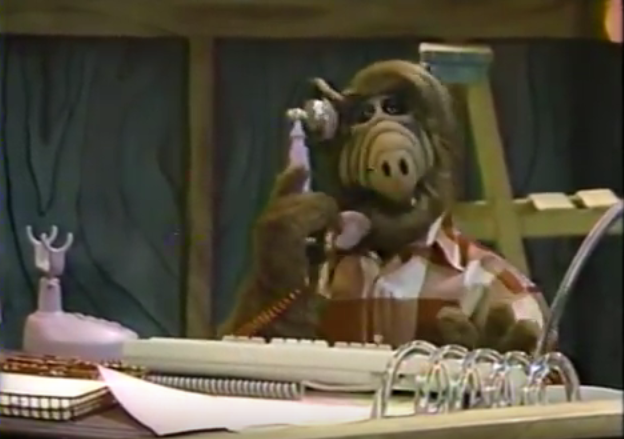
Finally this shit starts. It’s ALF sitting behind a desk, talking on the phone to his agent Sid. Just what kids were hoping to see when they tuned in to watch a puppet talk about cartoons: an extended contract negotiation.
ALF pitches Sid his idea for a new cartoon show. Which, obviously, is about him, because neither ALF nor Fusco can conceive of any project that isn’t about him. Our alien hero says kids will love seeing what ALF’s life was like back on Melmac, “before it went kablooey!”
…killing every single one of the new characters we’ll meet in this hilarious new treat for the kiddies.
It’s always been really weird to me that ALF: The Animated Series was populated almost entirely by characters who were killed in the massive nuclear destruction of their planet, but I just kind of figured the show was hoping we’d be too dumb to notice. You know…the fact that at the time we’re watching it, everyone’s already dead…that’s the sort of thing only some asshole who writes thousands of words every time ALF rips a fart would even notice.
But here, now, literally as the cartoon is being introduced to the world, ALF verbally confirms to the children of America that nobody they’ll meet in this new show is breathing anymore.
Fucking hell, ALF.
What’s more, he’s actually pitching Sid his memoirs. I know I said it was a cartoon, but right after he promises his memoirs will “sell a million,” he says, “Yeah, my new Saturday morning series!” It’s confusing that “memoirs” and “cartoon” are meant to mean the same thing.
I think all they’re trying to do is reinforce the idea that whatever shit happens in ALF: The Animated Series is canon. Fine. But these words mean different things. It would be like listening to a friend of yours describe the dinner he ate last night, but every few sentences or so he refers to it as a movie. These things are incompatible. Maybe the mystery is what the fuck ALF is talking about.
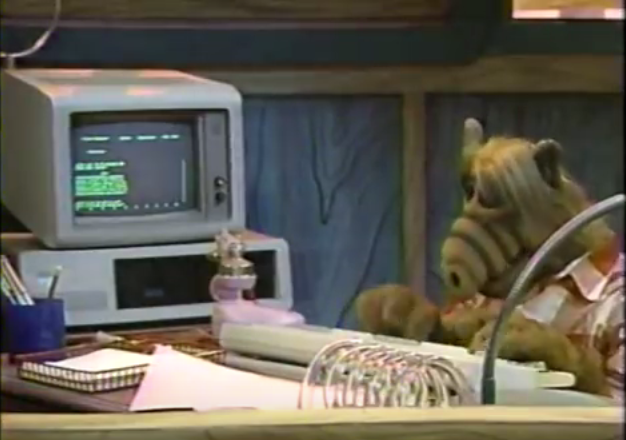
ALF hangs up on Sid, who we hear as some annoying, incomprehensible chipmunk gibberish. ALF sighs and says, “Agents!” I guess he’s mad because Sid had the audacity to ask how the book ALF is writing is somehow also the weekly cartoon that’s debuting in a few weeks.
Muddying the issue further, ALF starts tapping away on a computer keyboard, saying, “Great memoirs always start with the family life.” The implication is that he’s writing chapter one, page one, but then the computer screen displays a scene from his cartoon. So…is he writing or animating?
Fuck this show.
…wait. I guess I can’t say that anymore. :(
My favorite part is that we can see the computer monitor clearly as ALF is typing, and not one fucking word appears on the screen. Plug in your keyboard, dicksack!
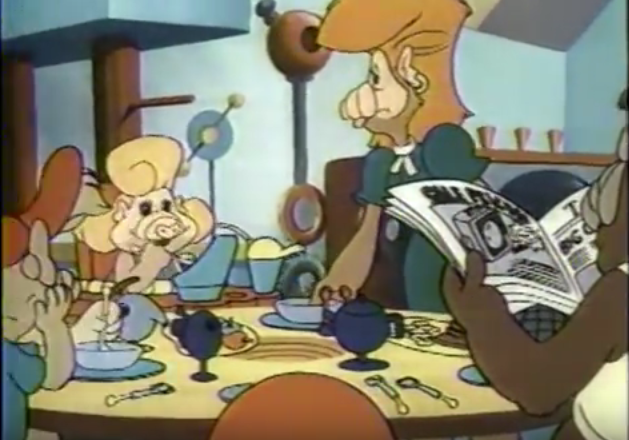
ALF introduces us one by one to his family: his mother Flo (dead), his father Bob (dead), his sister Augie (dead), his brother Curtis (dead), and his pet Neep (dead).
There’s also a scene in which he’s riding in a biplane with Rhonda, as part of some Orbit Guard maneuvers, and he accidentally ejects her. What a shame ALF continuity didn’t allow her to die as well.
So…Rhonda was in the Orbit Guard? The sitcom never alluded to that. In fact, the implication was pretty clearly that she wasn’t. Oh, who fucking knows.
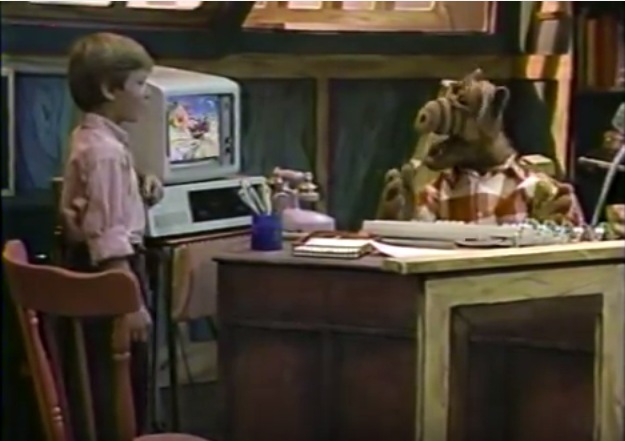
Benji Gregory comes in, and the lack of a studio audience is by no means the reason he doesn’t get a round of applause.
He finds ALF as he always finds him: masturbating to footage of himself. The kid sees him writing and literally pleads with ALF to put him in a story, because he knows full well it’ll never happen on the show proper.
It’s kind of weird. We only saw about twenty seconds of ALF: The Animated Series, and it wasn’t even a clip. It was just quick flashes of footage with ALF — our non-animated ALF — narrating what we were looking at. I’m assuming full clips weren’t ready yet, but the whole reason anyone is watching this shit is to see the upcoming cartoons, so cutting away from one so quickly just so we can spend time with television’s least charismatic child actor is puzzling.
And, yeah, it’s Benji Gregory, not Brian Tanner. You can tell because the two have very different character traits: one is named Benji Gregory, and the other is named Brian Tanner.
Oddly, though, Benji emotes in this special like he never, ever did on ALF. He puts emphasis and feeling into his lines, and actually sounds excitable. I mean, he’s still a terrible actor. If anything, he’s worse by virtue of the fact that he’s clearly trying to act, while on ALF I think he was just trying to hold his breath until the show ended. But it’s a bit odd that the “real Benji” we’ll never see again gets so much effort put into his portrayal. The kid’s playing himself! Shouldn’t that take less effort?
Also, sorry, but fucking hell, the “real” set ALF is in looks like it was stolen from a middle school production of Flowers in the Attic. It looks worse than the sitcom that’s implied to be a work of fiction.
Honestly, the levels of reality here are a bit strange. ALF at his keyboard is real and the mystery he writes in a bit is fake. Fine. That’s typically how the relationship between writers and their works functions. But the sitcom is a fictional production starring actors, while the cartoon he’s animating is real?
Does this rewrite ALF’s actual history? Instead of crashing on Earth and hiding out with a family in the suburbs, he landed and got contracted to write a bunch of shitty shows starring himself? Man, anything to erase Max Wright from ALF’s history, I guess.
Benji loses interest in anything that’s happening and starts looking around, wondering if there’s a reason he was born. ALF loves a misery.
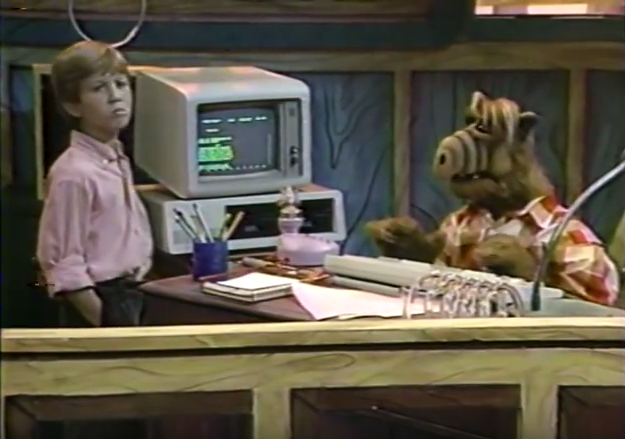
Anyway, yeah, Benji begs to be part of a cool new ALF production, because God knows the old one wasn’t cutting it. ALF says, “What about a mystery? I love a mystery!” Which gives us our title, of course, and I find that interesting for two reasons.
First, Benji asked to be put in a story, so of course ALF just pulls out of his ass the kind of story he’d like to see, and not the kind of story Benji would like to be in. Does Benji love a mystery? If not, go buy your own computer, kid.
The second reason is that the title “ALF Loves a Mystery” is weirdly passive. Why doesn’t ALF solve a mystery? I mean, he might as well. You have the fucking puppet and a slew of guest stars.
I know…I’m aware that I always complained about ALF being made the most important part of every story on the dumbass TV show, but at the same time, ALF himself is the draw here. There’s a reason he’s providing the framing material, and that’s that kids love him. Dangling ALF in front of their faces is a way to get them to watch these cartoon clips…and then later watch the cartoons. It’s a solid impulse.
So why isn’t ALF participating? It’s the difference between a special called “ALF Wins the Indy 500” and one called “ALF Enjoys Reading the Results of the Indy 500 a Couple of Weeks Later.”
Anyway ALF types “there’s saxophone music or some shit I don’t know I just love a mystery I don’t write them” and a saxophone stars playing somewhere.
ALF complains to the child that he’s secretly alone with in the attic that the music isn’t “sexy” enough, and, you know, after 99 episodes and a movie, I’m not even surprised enough to bitch about that. ALF types something on the keyboard (presumably “get sexy for the boy”) and the saxophone music changes.
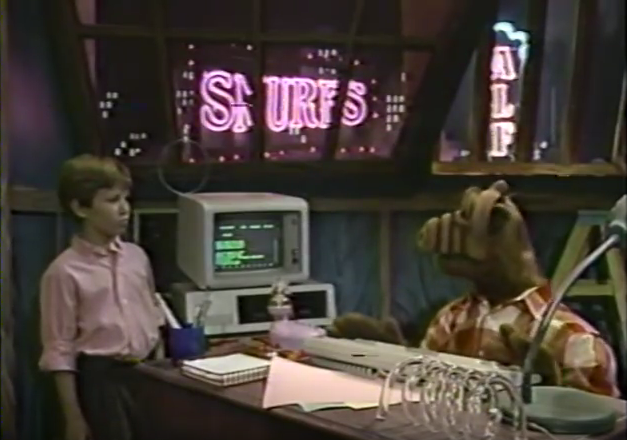
There’s a decent — if nonsensical — effect when a skyline scrolls into view through the windows. Is ALF on an airship? Whooooooo the fuuuuuuuck caaaaaaaares. We see two huge neon signs reading SMURFS and ALF. Which strip club would you pick?
Also, at this point, Benji appears to have decided that the answer to his question is “no.”
Benji asks what the fuck is going on, since the one thing he asked was to be in a story and ALF ignored him entirely to write instead a description of a neon SMURFS sign that was so vivid, the object materialized before them.
ALF begrudgingly agrees to let the kid be in his own story after all. Man, I’d love to read this as some kind of very obscure meta joke about how the episodes of ALF that seemed to be about Brian hardly contained his talentless ass. “You Ain’t Nothin’ But a Hound Dog,” “Hit Me With Your Best Shot,” “Don’t Be Afraid of the Dark”…I think the only one of his own stories he actually got to be in was “It Isn’t Easy…Bein’ Green,” which eerily foreshadowed his role on the show overall by having him play a vegetable.
ALF says Benji can be a detective named “Kid Cameron.” And a few decades later he can squander any fondness he earned from the role by becoming an obnoxious creationist. Benji complains that he doesn’t know anything about being a private eye, and ALF tells him to shut his ass. “Remember, I’m writing the story.” Which is the biggest fuck-you a puppet can deliver to a child actor in a special about cartoons.
Speaking of the story you’re writing, ALF, weren’t you working on your memoirs/animated series a few minutes ago, which is the whole thing we tuned in to see? Nah, that must just be my memory playing tricks on me.
ALF explains that in his mystery, he’ll embed clips of Saturday morning shows, and each time you see one, “expect a clue to follow.” Which is an oddly prescient sentiment; I remember reading a mystery by Sue Grafton a few years back, and being really impressed by the twenty-page recreation of scenes from The Snorks.
Benji realizes this story is becoming even less about him by the second and attempts to wish ALF into the cornfield.
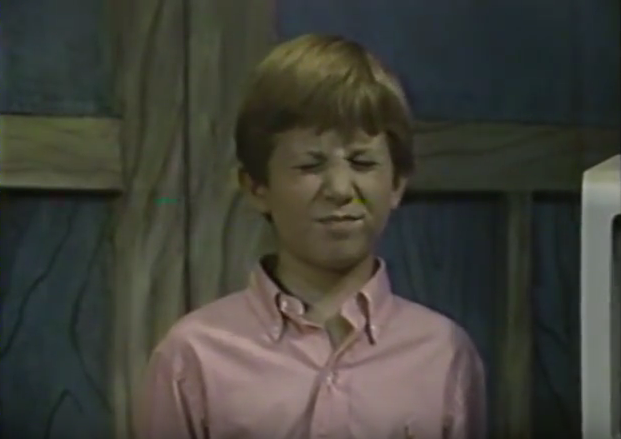
ALF complains that Benji isn’t wearing the right costume for a story like this, which, y’know, is probably his own fault as the guy with the magical fucking typewriter.
He types some description into the computer he is emphatically not using to show clips of upcoming Saturday morning cartoons, and Benji gets a trenchcoat and fedora. The kid asks, “What’s happening to me?” because he’s not used to ALF trying to put clothes on him.
Benji then fades away into nothingness, fulfilling the dreams of any writer who worked during the four full seasons of ALF.
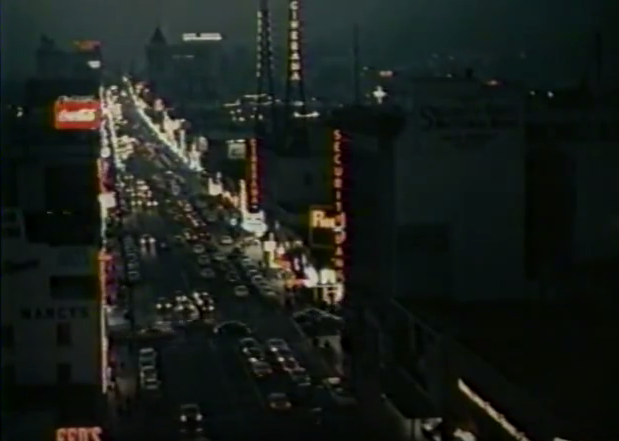
Then ALF shows a clip of ANYTHING BUT A SATURDAY MORNING CARTOON I GUESS.
It’s a bunch of stock footage of city streets that I’m certain looked fucking terrible in 1987, even before being copied to VHS, compressed as a digital file, and then shit onto YouTube. And I call bullshit, by the way. Where the fuck is my giant neon SMURFS sign? Why did ALF bother writing about it if it’s not even there when the story starts? IT IS ALMOST LIKE ALF AND CONSISTENT WRITING DO NOT GO TOGETHER.
I do like the detail of including a sign for REED’S HATEFUL SCREEDS in the lower left. That was a great meta joke that wouldn’t pay off for twenty years.
Does anyone recognize these streets, by the way? I mean, I doubt it, but since you can make out a few of the signs, maybe someone does.
We then cut from actual footage of an actual city street in actual motion to what is clearly a shitty still image of a painting.
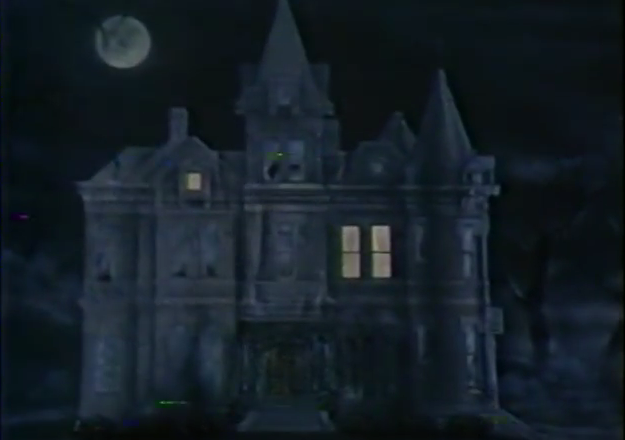
…why the jarring shift in presentation? Could they not find stock footage of an old house? I can name two dozen horror films that would have already been in the public domain by that point. Why not use some of that shit? Or why not skip the city streets and open here instead?
Ugh, whatever. At least “painting” is incrementally closer to “Saturday morning cartoon” and I’ll take what I can get at this point.
Actually, you know what? Fuck this. I really don’t get it.
Can you imagine being a kid who tuned in to see cartoons and what you get is ALF’s catatonic sidekick starring in a one-off detective story? That’s a pretty monumental bait and switch. It would be like tuning into that theoretical Full House version because you want to be the first kid on your block to catch a glimpse of Camp Candy, but the overwhelming bulk of the special is Bob Saget, as himself, explaining how to make egg jubilee.

Benji beams into the scene and stands around doing nothing. He shouts, “What do I do now?” because ALF still hasn’t written one damned fucking thing about the central character of this mystery, preferring instead to describe irrelevant city streets. Anything to avoid having to write about this kid, huh, ALF? Trust me, I wish I had that luxury.
Also, the fact that Benji shouts this upward makes it look like he’s yelling at God about his lot in life, so “ALF Loves a Mystery” has given me one thing I can enjoy.
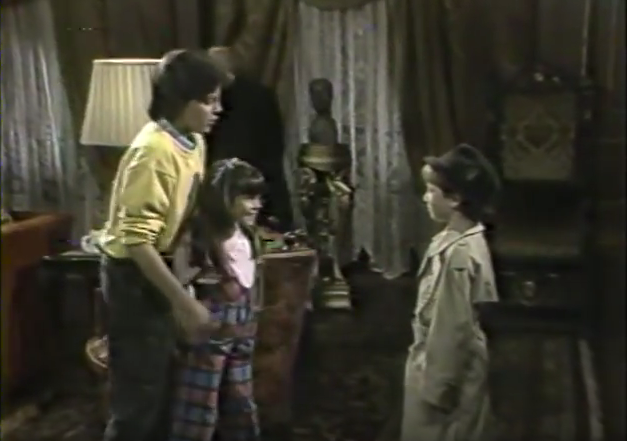
Benji rings the doorbell, and it sounds like that trash barge sound you’d hear in the Beetlejuice cartoon when he took off his socks or something. I guess this qualifies as a joke. ALF loves an irrelevant sound effect.
Some old butler shows up and yells at Benji for no reason, then lets him in. The parlor is full of other characters we don’t and won’t ever care about. For instance, our hero meets Frank and Joe Hardy…only — ho ho ho! — it’s actually Frank and Jo Harty! So it’s not the Hardy Boys at all! It’s a Harty Boy and his Harty Sister!
Man, this is so much better than watching cartoons!

Then the sexy saxophone music plays as Encyclopedia Benjo catches a glimpse of Jackée from 227. He pops the same boner he popped when he read the script for this special and saw he had lines.
I’ll give this credit for being a taboo pairing on multiple levels. Black/white, adult/underage, functional/mentally disabled. But does anyone find it odd that ALF is actively writing this? Like, this isn’t just some collection of actors who were free this afternoon. ALF, at a computer keyboard, is writing fan-fiction about a little boy he knows getting busy with a sexy black lady. ALF loves an interracial canoodle.
We also meet the other folks in the room, who are detectives as well. None of them are worth mentioning, but Stephen Furst starts talking in a high-pitched squeak before he remembers he’s supposed to be gruff and imposing. Then he cracks his knuckles and hurts himself. It’s a mildly amusing flourish, and I wouldn’t be surprised if Furst came up with that himself. He was Flounder in Animal House, so he definitely has comedy cred. Also, looking him up I see he died just last month at age 63. I had no idea. Congratulations on being memorialized on this blog with your appearance in “ALF Loves a Mystery.”
Jackée from 227 makes some speech about how she’s collected a bunch of great sleuths together in this room because there’s a fortune hidden somewhere in the house, and she can’t find it. Whichever sleuth finds it gets to split it with her fifty-fifty. She makes some crack with the butler about how they’ll all be dead later so she won’t actually have to share it, and the two of them laugh while all the sleuths just fucking sit there like idiots.
Yeah, great sleuths. Someone just openly announced your murder and you quietly walk right into their trap. For a guy who loves a mystery, ALF sure doesn’t know anything about detectives.
Then we…
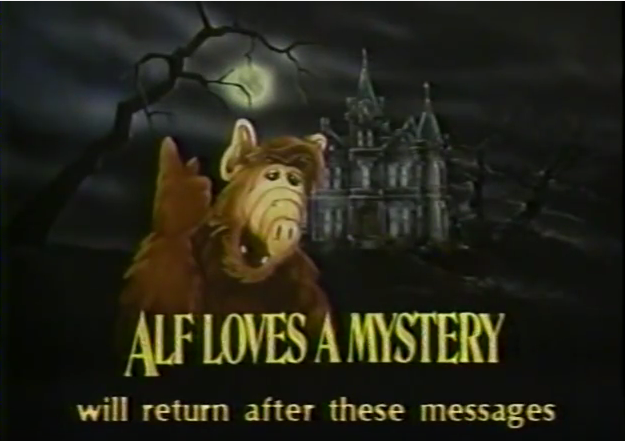
Oh fucking come on. We made it all the way to the first commercial break with no actual clips of cartoons?
That brief scatter of bits from ALF: The Animated Series doesn’t count, as nothing happened and it wasn’t even cohesive. It was just some stitched-together shit that the puppet talked over. It didn’t give any indication of what the show was…it was just fleeting evidence that it exists and that Paul Fusco didn’t take the network’s money and flee the country.
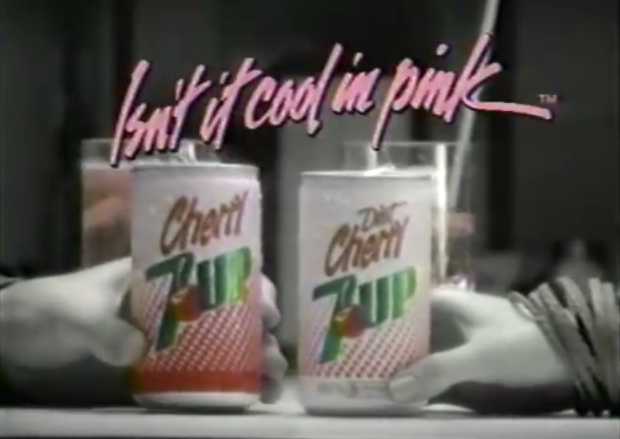
The YouTube version has the original commercials intact, and I’d encourage you to go watch those if it didn’t mean you might accidentally see some of “ALF Loves a Mystery.”
It’s cool to see them and I’d wax nostalgic about them but I’m already 4,000 words deep and we haven’t even gotten to the cartoons yet so you’ll forgive me for not sharing my witty observations about the Cherry 7-Up song.
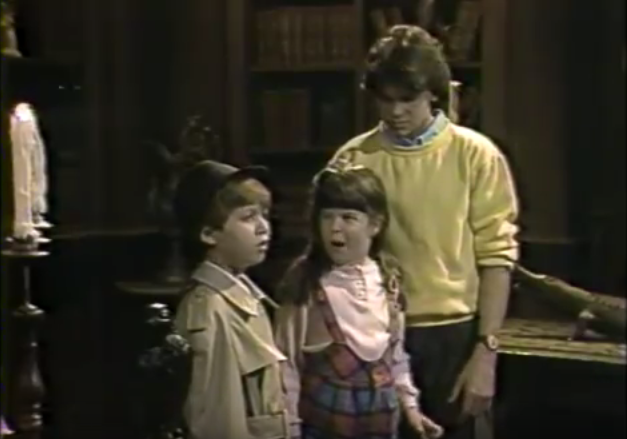
After the break, Jo Harty can’t believe Benji’s been on television for a full year and still can’t deliver a line to save his life.
It’s a weird scene. These three walk into a room and find an old organ playing by itself…but it doesn’t really register, because the organ music just sounds like part of the soundtrack, and we don’t get a closeup of the keys moving of their own accord or anything. If a character didn’t overtly point out that the music was diagetic, I never would have realized anything was amiss. ALF loves a botched setup.
Also, hey, IMDB has Frank and Jo’s last name as Hardy, despite the fact that Jo spells it (and the joke) out in the previous scene. Someone should go update that.
Benji walks over to the organ to investigate, and finds a book of sheet music with Alvin and The Chipmunks on the cover. Which…I mean…like…the organ could have been playing the Alvin and The Chipmunks theme, then. That would have been cute. But instead it’s just this boring, bland noodling that feels like establishing music. ALF loves a missed opportunity.
I was never a big fan of Alvin and The Chipmunks, but I know I’ve seen a huge amount of episodes. If I remember correctly, it aired at some point before The Disney Afternoon, or Garfield and Friends, or something else I actively enjoyed watching. I couldn’t tell you about a single damned episode of Alvin and The Chipmunks, but I was stuck watching it to get to whatever it is I actually wanted to see.
Speaking of which, can I just say that Garfield and Friends was awesome? Because it was. I know it’s cool to hate on the Garfield comics, and that’s fine…I won’t stop you…but Garfield and Friends was legitimately good for what it was, and it had an absolutely perfect voice cast. Don’t tar the cartoon with the same brush.
Anyway, back to something that’s actually shit: Benji Gregory. Sherlock Homeschooled opens the book of sheet music, and we see actual clips of an actual cartoon thank Christ.
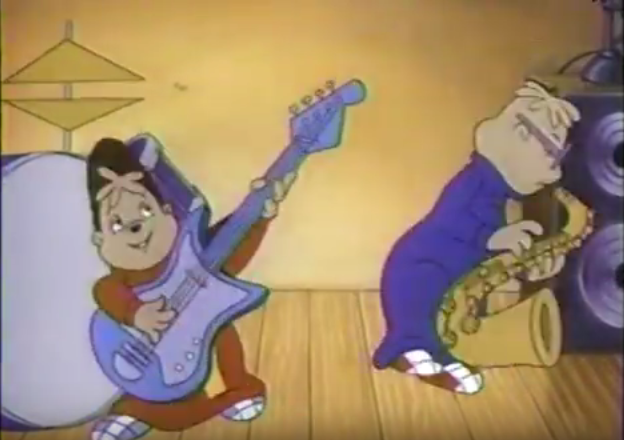
It’s like twenty seconds long again. Yay.
At least it’s a self-contained, cohesive clip this time. Not that it’s interesting in any way…it’s just some performance footage of The Chipmunks playing “High Tech World.” A quick Google search shows that this is from an episode called “Back to Dave’s Future” from season five. Pretty cool that Alvin and The Chipmunks is playing second fiddle to ALF, when they’ve already outlasted the entire length of his show.
“High Tech World” is an original, if you’re interested. Often The Chipmunks would perform covers of real songs — probably because it’s easier to speed up existing audio than to write a new song on a weekly basis — but this one was exclusive to the episode. The audio is available here, and you’ll see it doesn’t have a proper ending, which was probably pretty common for this show.
The song isn’t terrible, but it’s just a snatch of it and that’s all we get. No plot, no sense of what the story will be, and since Alvin and The Chipmunks play music in every fucking episode, no indication of why we should tune in for the fifth season at all.
Then we cut back to Benji and The Hartys laughing at the clip, even though it contained exactly zero jokes, sight gags, or lines of dialogue. ALF loves an incongruity.
ALSO WHY WASN’T THE ORGAN PLAYING “HIGH TECH WORLD” IF THAT’S THE SONG THE KIDS ACTUALLY HEARD WHEN THEY OPENED THE SHEET MUSIC MY GOD
Anyway, we’re almost ten minutes into this fucking shit and all the kids tuning in have been treated to a whopping forty seconds of cartoon previews. Half of that went to a show that they’ve already been watching for four years. What a fantastic preview special!
The disembodied (or, technically, off-camera) voice of Alvin tells the kids to look under a blue dog for their first clue. But ALF said that whenever Benji sees a cartoon, a clue will follow…so why isn’t Alvin giving a clue? He’s giving a clue where to find the clue (which, in turn, means that ALF provided a clue where to find a clue where to find a clue), but fuck that. Give me something of substance, Alvin you fuck.
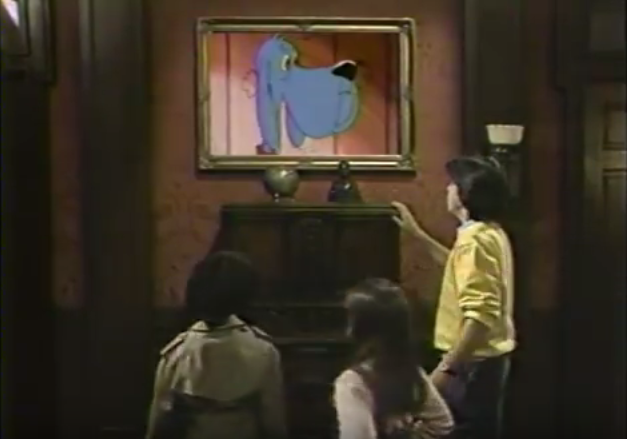
Frank Harty does all the work of figuring out where to go, because if they gave these lines to Benji Gregory they’d be stuck on set all night as he stumbled through them.
Then again, Frank doesn’t do much better. He identifies the dog as something that sounds like “Beauford the Blue Dog,” and I couldn’t find jack shit about that. It took me a lot of Googling (and luck, as I only found him through a stuffed animal that looked vaguely like what I see here) to discover that this is Foofur.
Who the fuck is Foofur? Some dog from a shitty Hanna-Barbera show that lasted all of two seasons. I like to think that it was doomed by virtue of appearing here, just so I can hold ALF responsible for killing a dog.
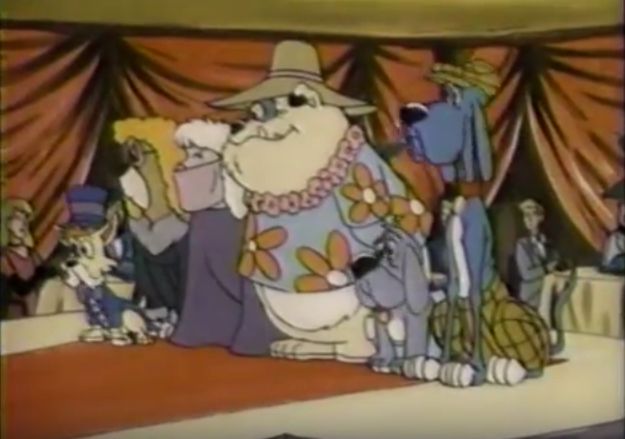
This clip is even shorter than the other ones, and it’s more like what we saw from ALF: The Animated Series than what we saw from Alvin and The Chipmunks. Foofur — voiced by the great Frank Welker — just mentions the names of the other characters, I guess, and shows them in silly costumes, then tells kids to tune in.
How exciting. I can’t wait to watch this show I never heard of now that I’ve seen these characters I still don’t know in outfits they don’t normally wear anyway.
While the kids watch this clip, Detective Flounder sneaks up on them, and the implication is clearly that he’s being an asshole, because instead of doing any detective work himself, he’s just following some kids around.
But isn’t that what Benji’s doing, too? He ain’t done squat. He’s just shuffling around behind the Hartys, wishing Jackée from 227 would hurry up and kill him already.

The kids once again laugh at a clip of a cartoon without any jokes in it, but they still have no idea where the treasure is. Benji miraculously remembers that Alvin told them to look beneath the blue dog, rather than at the blue dog, which causes complete shutdown of the central nervous system.
Hey, out of curiosity, has anybody created a detective dog character named Sam Spayed? If not, forget my IMDB request and get on that instead.
The kids find a key attached to a poem about Fraggle Rock so bad even I won’t subject you to it. Then they leave and the painting of Foofur falls on Detective Flounder.
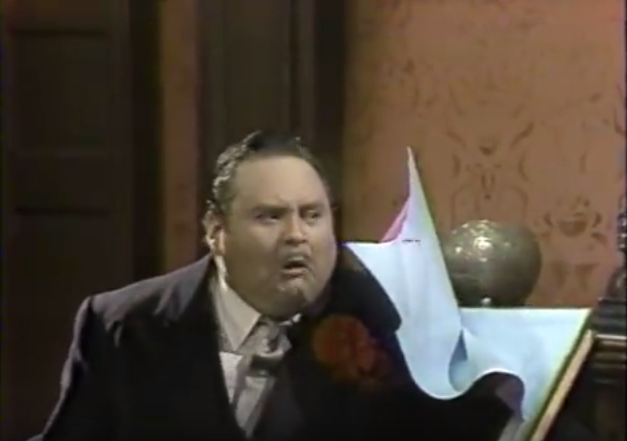
This is actually a pretty major loss since I guarantee you that was the only painting of Foofur that’s ever existed.
Speaking of which, is Jackée from 227 really such a big fan of fucking Foofur that she has a painting of him hanging in her hallway? How bizarre. Alvin and The Chipmunks sheet music is at least mildly believable, but I absolutely refuse to accept that anyone, anywhere, at any point in history, hung a painting of Foofur in their house.
And then…
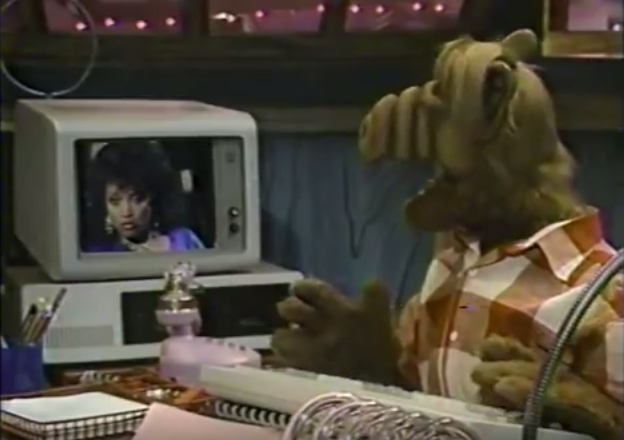
Oh, yeah! ALF is in this. I forgot.
Honestly, I have to admit I’m surprised Fusco allowed ALF to be absent for so much of this special. Every so often he narrates a line, but it’s not as frequent as you’d expect. Maybe that’s why Benji Gregory was tapped for this; since ALF couldn’t be in every scene, Fusco wanted to make sure he chose the one actor on Earth that couldn’t upstage him.
It’s really a shame. I’d much prefer a half hour of Max Wright stammering his way through a hospital drama. Maybe he could cut open his patients and find the cartoon clips in there. Or maybe he’d just suck on a crack pipe and hallucinate an upcoming episode of My Pet Monster.
A running joke here is that Jackée from 227 is the only character who can hear ALF’s narration, so there’s a bit where they talk back and forth directly. And by “a bit” I mean they talk back and forth directly. There aren’t any jokes. As much as you can do with the concept of a fictional character speaking to her creator, this just boils down to the creator introducing himself and the character saying, “ok cool.”
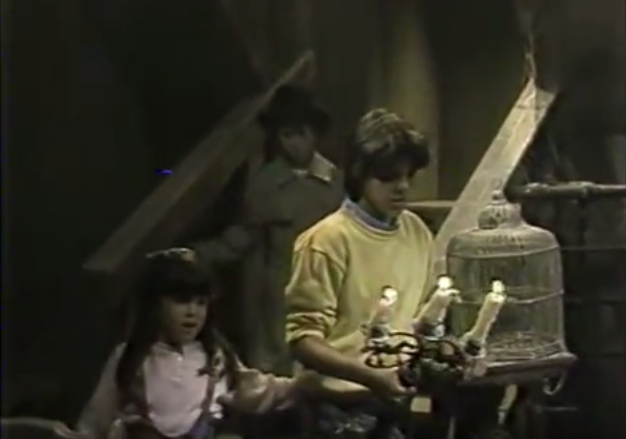
Then we’re back to the mystery ALF loves so much more than cartoons. I’m deeply amused by the fact that, once again, Benji’s been reduced to standing quietly in the background of stories that are ostensibly about him.
I’m not complaining. The Hartys — Danny Ponce and Heidi Ziegler — suck fat dick, but they’re far better performers. Ziegler in particular manages to stay on the right side of the grating child actress line, though she admittedly tiptoes damned close to it many times. For example, when she sees a sign that says FRAGGLE ROCK: ONE MILE DOWN and proudly reads it out loud as though she cracked the riddle of the Sphinx.
The kids gather ’round a hole in the wall and listen to what I guess is the distant sound of babbling Fraggles, but it’s just chipmunk sounds for the third fucking time in the special. ALF loves a recycled sound effect.
Benji looks into the hole and Frank Harty asks what he sees, and we get the funniest line by a landslide when the kid replies, “Nothing. Wait, I do see something! It’s a tunnel!”
So, in other words, you see nothing.
For the first time, this special genuinely had my interest, as I was wondering if we’d get clips of Fraggle Rock. And we…don’t. We instead get clips of Fraggle Rock: The Animated Series, which I didn’t even know existed.
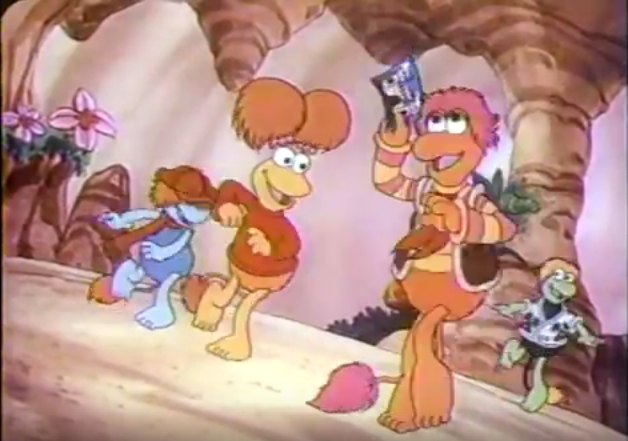
That’s because it sure didn’t exist long. It was on the air for a whole three months before it was canned.
Looking into it, this doesn’t seem like much of a loss. It disappointingly didn’t have any of the original voice cast…and, yes, I know Muppet Babies didn’t, either, but in that case it made some kind of sense, as voices change between childhood and adulthood.
Also, Muppet Babies had some legitimately good voice actors, like Dave Coulier, Howie Mandel, Frank Welker, Russi Taylor, and Barbara Billingsley. Everyone did a good job of capturing the voice and spirit of their characters without directly aping Henson and company, and the show was better for it.
Here, the Fraggles are just the Fraggles, voiced by imposters. I guess that might work for kids who had never actually seen Fraggle Rock, but for those who already liked the original show…what was the point of this? Wouldn’t they just rather watch the actual episodes with the puppets and the talent?
This clip is probably the worst yet, as it’s just the show’s opening titles. Not even the full opening titles. How lazy. At least the previous clips attempted to spotlight some aspect of the show in question. Here it’s just a snippet of the intro. Boy, I can’t wait to tune in and hear the rest of the theme song!
Then we’re back with the kids and Not-Gobo tells them to look for a woman with a glass eye or something. Literally none of these things have been “clues” at all. Just clues where to find the clues where to find the clues where to find the clues where to find the clues.
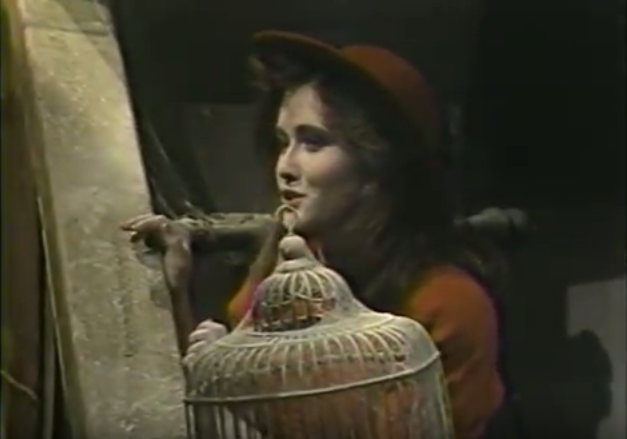
Shannen Doherty materializes from behind a boiler to reveal that she’s evil; she’s been following the Hartys all along! Not like Kid Cameron who…
…erm…
ALF loves a discontinuity.
Anyway, we get another commercial break. For those keeping score, we’re almost fourteen minutes into the special — about the halfway point — and we’ve seen four clips of cartoons. I haven’t done the math, but I’ll just assume that’s been around twelve seconds of screentime. The rest of it has been taken up by Benji Gregory struggling valiantly not to pick his nose while the cameras are on him.

The commercials this time include a Snickers ad with a woman who pronounces “peanuts” a fuck of a lot like “penis.”
That’s not a joke in the commercial, and I’m not joking by observing this. Go watch, if you don’t believe me. The narrator pronounces “peanuts” just fucking fine, but this woman can’t for the life of her. “The caramel and the chocolate are great, but the penis…!” “The penis…I’m so hungry!”
I’m assuming ALF wrote the commercials as well.
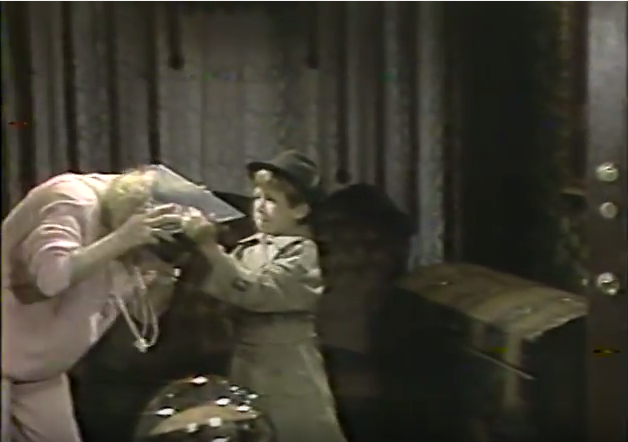
Then we’re back, and Benji miserably helps Betty White get unstuck from her Pyramid Head cosplay.
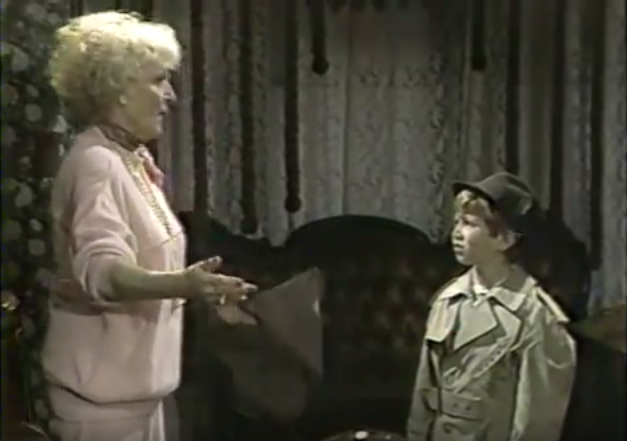
She talks about how the pyramid thing was supposed to increase her cosmic powers, and Benji’s face makes it very clear that he doesn’t give a shit about what she’s saying.
Betty White is funny, talented, thoroughly charming, and a genuine treasure. So of course “ALF Loves a Mystery” doesn’t give her any jokes or anything to do.
It’s really weird. She was the biggest name in this bloated cast, and probably commanded the largest salary. So of course they just have her stand in a room for a while, then sit in a chair.
She has a crystal ball, which is the glass eye the kids were looking for, and they ask if she can make it work. She can do better than that, kids! She can make you regret asking!
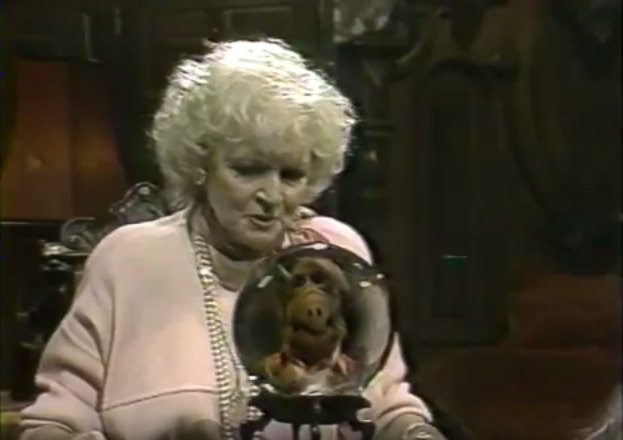
She sees ALF, which means six more weeks of diddled children.
ALF then writes her out of the story, because she called him a “hairy little guy.” What…part of that description did he take issue with, exactly?
Like, if someone called me a spiteful piece of shit, I’d be offended. They’d be right, but, still, I like being offended. However if someone called me a guy with glasses and a Hawaiian shirt…I’d probably just wonder why they were describing me to myself.
Whatever. ALF is pissed, Betty White is wiped from existence without having said or done anything worthy of her presence, and ALF introduces a clip of Gummi Bears himself.
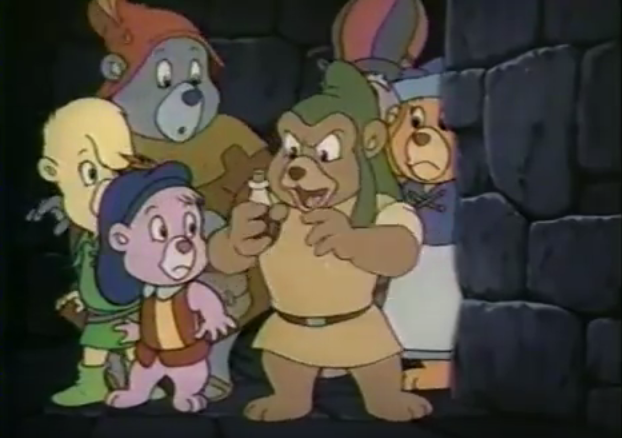
The clip is weird. It contains dialogue (IMAGINE THAT), but no sound effects. If you’ve ever seen Gummi Bears, you remember quite well the sound effect used when they bounce. I mean…that was kind of their whole gimmick, and how they solved every problem. It happened a lot, and it had a pretty memorable sound.
So they bounce here in total silence. They unstop and drink their Juice That Makes You Bounce in total silence. And they crash around and fight evil trolls in total silence.
I mean, it’s possible that these were unfinished clips and the new season wasn’t ready to air yet, but Gummi Bears had been on the air for two full years by this point. Couldn’t they have used a clip from one of those episodes, so it didn’t look so half-assed? Granted, the point of specials like this is to show a preview of programming to come, but nothing distinct happens in this clip anyway. The Gummi Bears drink their shit and bounce at the bad guys. That happened in every episode ever. You might as well show an instance that has its fucking sound effects applied.

After the clip, Grammi Gummi — yes, that is her name — tells the kids to dig through a trunk and find a fucking Smurf or something what does she care. The Hartys figure out the mystery (they are to dig through a trunk and find a fucking Smurf or something) while Benji does nothing.
…which, in turn, means that ALF can’t think of anything for Benji to do, and he probably wonders if there’s a way to rewrite the story so that Benji’s mother was unable to have children.
ALF loves a hysterectomy.
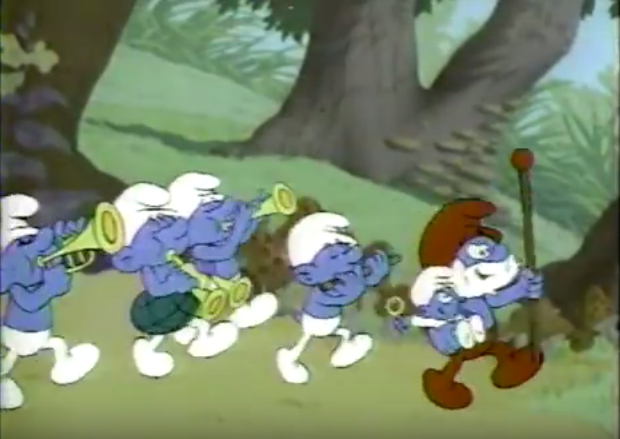
The Smurfs has the decency to give us what seems to be a finished clip, with sound effects and everything. Nothing much happens in it — Wild Smurf pours some kind of potion on Gargamel, which shrinks him — but, whatever. It’s The Smurfs. It’s there, it’s inoffensive, and then it’s over. And it also brings the total amount of screentime cartoons have gotten to something like half a minute. Great!
Also, I don’t know how common this was for Saturday morning previews, but a huge number of these cartoons are returning from previous seasons. I mean…I guess that’s understandable, but doesn’t that make this showcase less exciting? It isn’t “look at all the cool new stuff you’ll get to watch.” It’s “look at how little has changed since you last watched.” ALF loves a complacency.
I don’t have much to say about The Smurfs. I think it’s one of those shows that everyone saw growing up, but nobody really liked. Not that anyone disliked it, but, really, what was the actual appeal of the show? Did anyone care about it? Did anyone have a favorite episode?
I will say that when I was in Germany last year, I got to visit the Haribo factory, and they had gummy Smurfs that were fucking incredibly good. Also, Smurfs were called Schlümpfe which automatically makes them way better. You can get Haribo Smurfs here in America, but they’re a different recipe and texture and are therefore SHIT. Import some German ones, though. They’ll blow your cock off.

Papa Smurf tells the kids to go look in the attic, and that’s fine, but then Betty White and Benji Gregory flirt hardcore about how much they want each other’s bodies, and that’s not fine.
In the next scene, Shannen Doherty wants to fuck Benji so bad she can’t stop touching him, and I’d just like to remind you all that somewhere off screen ALF is writing an explicit story about his nine-year-old friend getting heavily pet and pawed at by adult women.
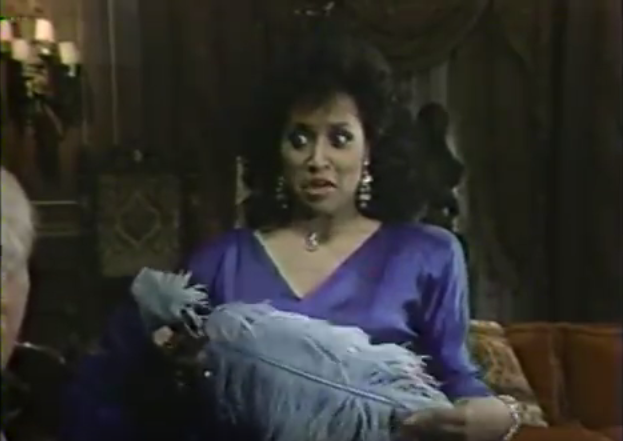
As if to emphasize how furiously ALF is masturbating behind the keyboard, Jackée from 227 finds a big feather and talks about how she could use it in her striptease act.
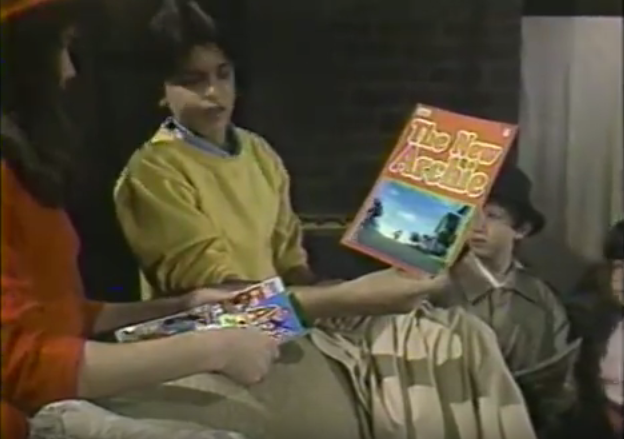
In the attic Shannen Doherty stops talking about how much she likes prepubescent dick long enough to talk about how much she likes the Archie characters. We’ve all had Tinder dates like that, huh fellas?! Actually, I’m noticing that Shannen Doherty is getting to interact with the kids directly, which gives her far more presence than Detective Flounder had, and a much meatier role as well. ALF loves a Doherty.
Then Frank Harty finds a magazine or a comic called THE NEW ARCHIE (ALF loves a newarchie), which he reads as THE NEW ARCHIES and nobody does a second take because this is technically still an ALF production.
Also, you have to love Benji being an obscured background detail in his own story.
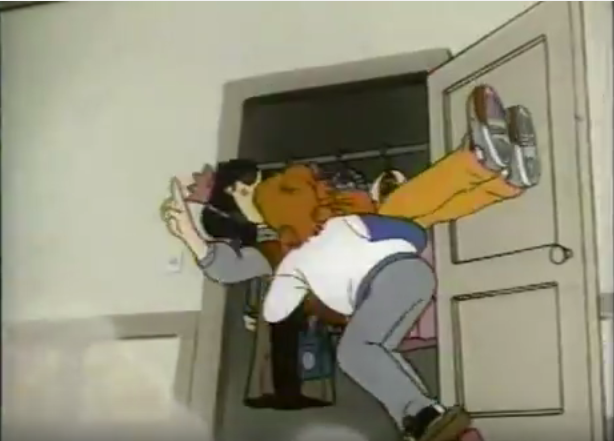
The clip includes Archie sweeping Jughead into the closet for seven minutes in Heaven.
This preview is a bit weird, because there’s no consistency on what they call the show. The magazine cover said The New Archie, Frank Harty said The New Archies, and the narration in the clip says The New Adventures of the Archie Gang.
A bit of Googling reveals that the show eventually(?) settled on the name of The New Archies after all, so please give my apologies to Danny Ponce. What a stupid title, though; the characters aren’t The Archies. The band they formed was called The Archies. The show title makes it sound like it’s about a new incarnation of the band, but it’s not. It’s the same characters, and as far as I can tell it has nothing to do with the band at all. Either of the other floated titles here would have been miles better.
This is another of the brand-new shows “ALF Loves a Mystery” is promoting. Since you’ve never heard of it and it can’t even decide what it’s called, it will come as no surprise to find out that it was cancelled after a single season.
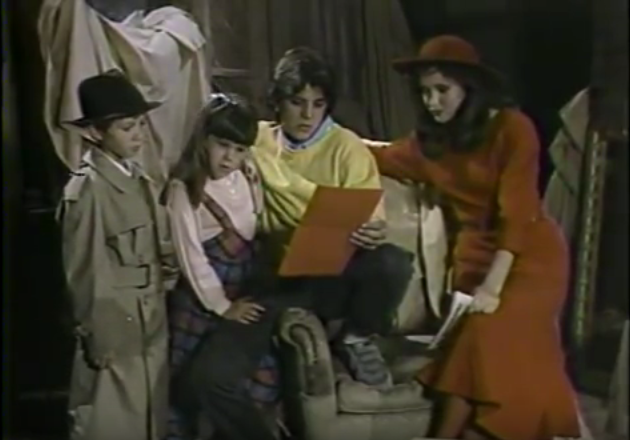
Man, look at these screengrabs. Maybe it’s just the fact that I necessarily have to contrast them with the bright cartoons, but who the hell picked this color palette? It’s like the special’s wardrobe and set designer sat down and agreed that everything should look like an expired condiment.
Archie tells them to go somewhere else and I already forgot where. These aren’t clues as to where the fortune is hidden! This is a fucking scavenger hunt! ALF YOU FAT FUCK YOU DON’T LOVE A MYSTERY AT ALL
There’s a decent bit of visual competency with the way the next shot is framed. They open the door to whatever room it is they were looking for, and a swinging lamp lights them just barely before it swings away again. It’s not half bad, even if you have to consider the fact that there’s no reason for the lamp to be swinging at all.
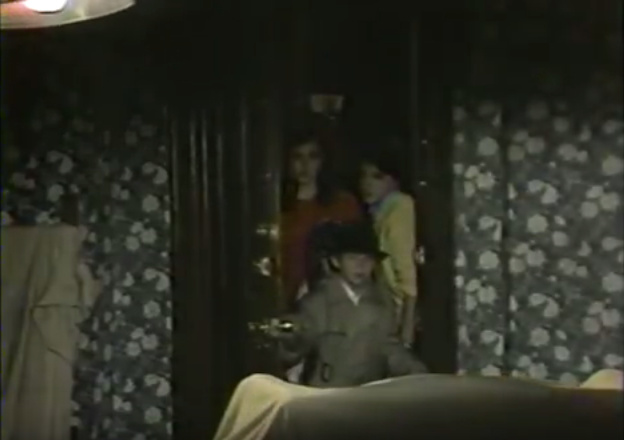
Inside the room is that no-name nobody old woman from the credits who’s never done anything as good as Our House. She’s the maid or something, and she tells everyone not rat her out for hiding in here watching a new show.
The kids hear the words “new show” and stampede toward the TV faster than you turned your science book to page 130 when someone told you there’s a picture of boobs on it.
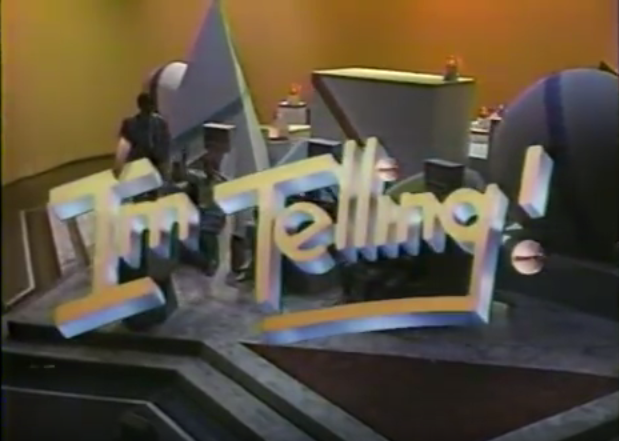
The new show moistening up the old lady is I’m Telling!, which I guess is like The Newlywed Game for children. Siblings have to answer questions about each other, and it looks like it’s fucking terrible. Once again, it’s an actual new show “ALF Loves a Mystery” is spotlighting, and once again it was cancelled after one season. The solution to the mystery of who murdered these shows is ALF.
After the clip, Benji Gregory picks some shit out from under his fingernails
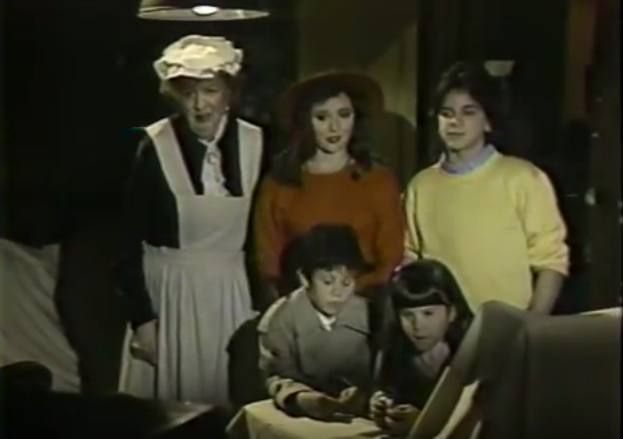
As he goes about his noble work, the actors with lines try to interpret the clue that the I’m Telling! announcer gives them. It involves an owl and a fireplace, so everyone stands around like idiots wondering what it means. I’ll tell you what it means: go to the fucking fireplace and look for an owl.
But I guess it’s all worth it to hear Benji Gregory deliver the line “To the parlor!” with all the enthusiasm of a coworker asking if you have a tissue.
The kids rush in “To the parlor!” and Frank Harty reveals he has a learning disability by rushing immediately to an end table and looking at a telephone. Frank, you moron, there were two words in the clue and you’re investigating neither of them.
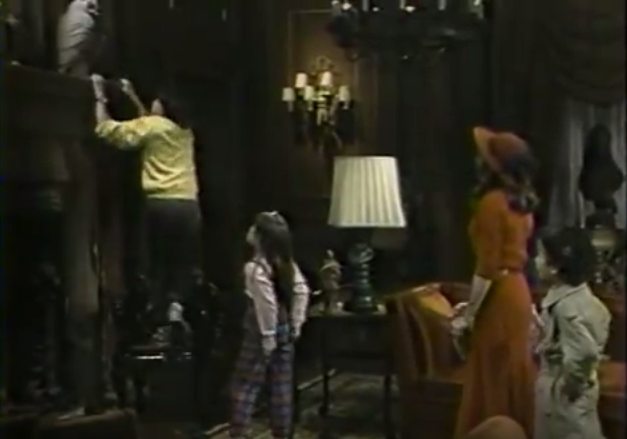
Thankfully his sister was born in a hospital rather than in the back of a tomato truck and actually looks at the fireplace, where she sees an owl. Who would have thought? Frank climbs up to retrieve it. Benji Gregory is replaced by a coatrack.
Then Frank starts to fall or something and smacks the owl, which opens a secret passage behind the fireplace. Shannen Doherty says, “Kid, you’re incredible!” to Benji, despite the fact that the only thing he’s done for the entire special is twist a doorknob.
Seriously, if I were Frank Harty I’d be fucking pissed. FAWN OVER ME SHANNEN
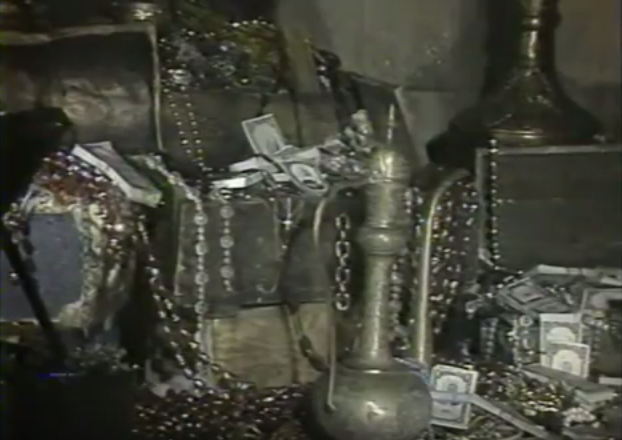
The fireplace reveals the shittiest looking treasure imaginable. For fuck’s sake, couldn’t you shine this crap up for the camera?
Then Jackée from 227 comes in and orders Shannen Doherty, the Hartys, and a trenchcoat stuffed with hay into the middle of the room so she can kill them. There’s a decently amusing bit of business when Detective Flounder rushes in and joins the victims, saying, “Did I miss anything?” It’s a cute enough joke.
Jackée from 227 outlines her plans to have the sleuths retrieve the treasure from the vault, after which she’ll seal them into it. Which — and maybe it’s just me — she probably should have done without saying it out loud. Like, I’m sure these dopes would be willing to crawl in and get the gold, but probably not after she makes it clear that she’ll murder them immediately afterward. I guess she’s just spilling all this shit because ALF loves a soliloquy.
Then the lights go out and everyone runs around a bit to kill time.
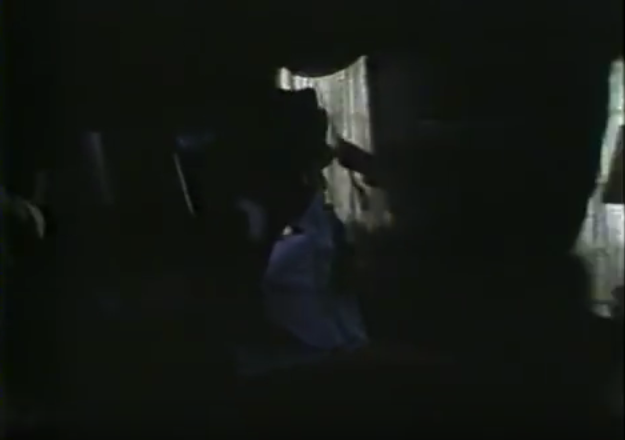
When the lights turn back on — ALF loves an electricity — the old lady is there, and she reveals herself to be a cop that’s been undercover on this case for two months.
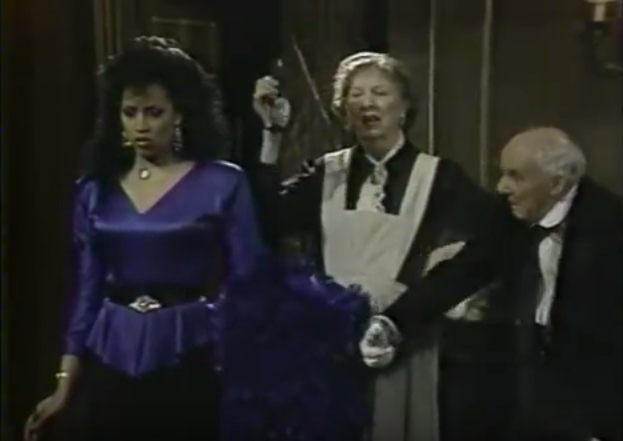
Fine. Whatever. I hate being alive. But — and I really hate to nitpick, because the internal continuity in this special has been rock solid so far — this raises two questions. First, why was she upstairs flicking herself off to I’m Telling! when she knew there were murderers in the house?
And second, two months? For what purpose? What crime was being committed? Yes, yes, I know it’s illegal to lure children into your house to kill them (thanks, Obama), but until this very moment, nothing illegal happened. Jackée from 227 was about to kill people, but why did you need to be scrubbing her toilets and cooking her dinner for sixty fucking days before that happened? What did that help? Just stake out the house and pounce when all the sleuths show up.
And you know what? Fuck it. A third question: why is an undercover cop 98 fucking years old?
Grammi Gumshoe launches into this whole monologue about how Jackée from 227 isn’t who she claims to be (she’s actually Jackée from 229) and relays a story about how the treasure rightfully belongs to Shannen Doherty because it was stolen from her family and hidden here and blah blah my god who cares. ALF, I guess. ALF loves a history.
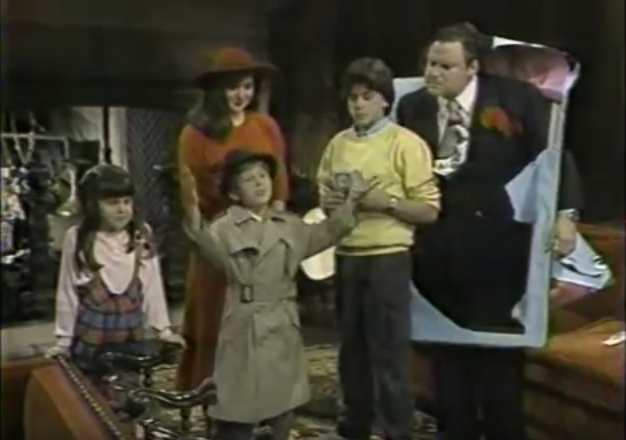
Benji Gregory throws up his hands and says “All in a day’s work!” which goes about as well as expected. Shannen Doherty leans in to kiss him, so ALF beams him out of the story, because the last thing ALF wants his name on is something with any kind of closure. “ALF Loves a Mystery” should have ended with Benji being hauled off screaming by the government.
Back in reality, Benji looks at the money he collected:
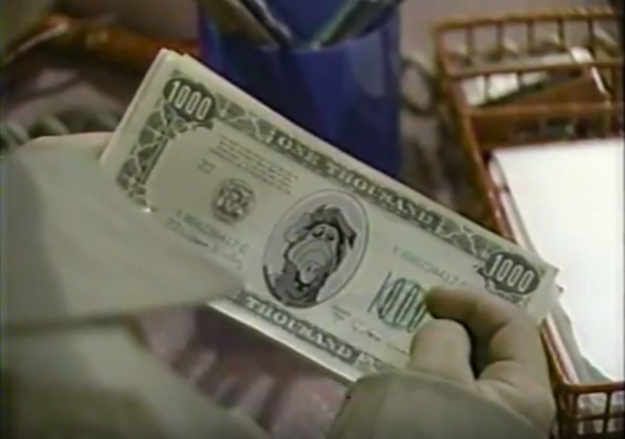
It’s a dumb sight gag, but at least it’s a gag. The camera lingers on it far too long, which leads me to believe the special came in under time. The best kind of padding is a still shot on a static image, I always say.
Of course, this does provide the best ever excuse for Benji Gregory to deploy his trademark bitchface.
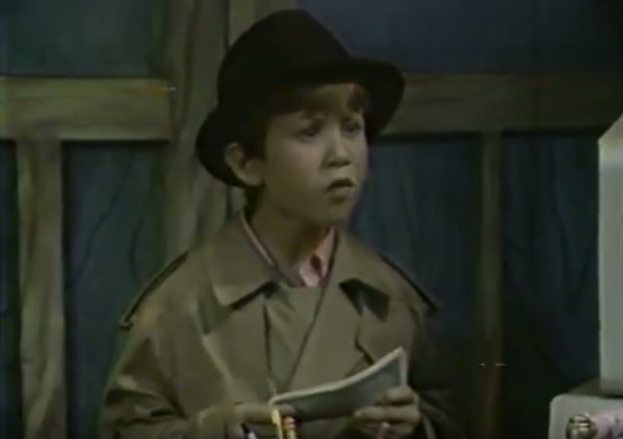
Benji complains that he didn’t get any money out of this shit and he also didn’t get to kiss Shannen Doherty. ALF tells him to go fuck himself.
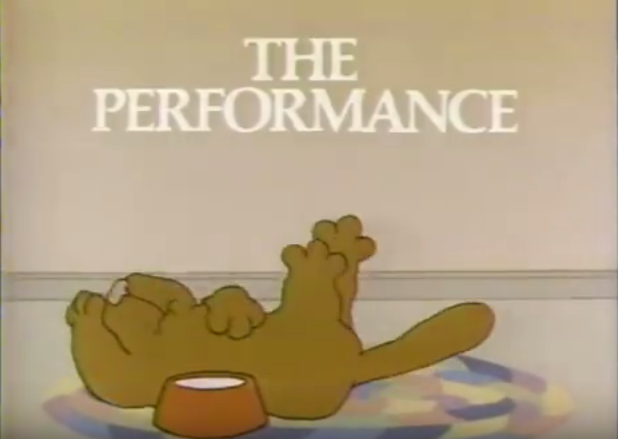
Then we get the final batch of commercials, in which a cartoon cat provides his review of Benji Gregory’s first and last starring role.
In the short scene before the credits, Shannen Doherty shows up for a date with ALF, and the sexy saxophone music plays again. Then ALF rubs Benji’s nose in the fact that ALF’s going to rub his nose in Shannen Doherty. ALF loves a cuckoldry.
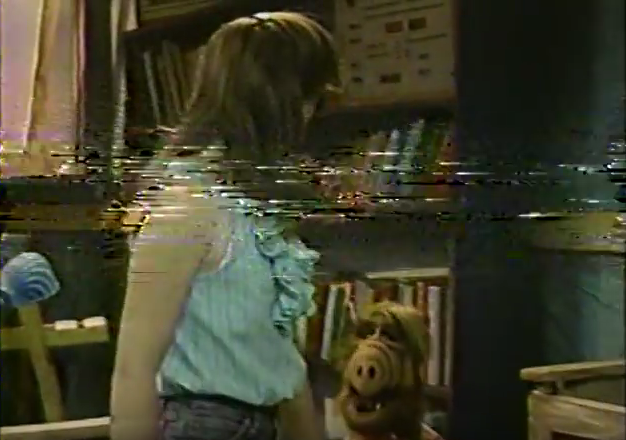
If you’re wondering if the actual setup of the special — ALF pitching / writing his memoirs — ever comes back around as any kind of payoff, the answer is: you’re watching an ALF thing. Of course it fuckin’ doesn’t. Neither did any of that shit about Jackée from 227 being able to hear the narrator.
But I guess those sorts of blindspots around the margins are meaningless in the face of the fact that “ALF Loves a Mystery” fails to even provide its titular fuckin’ mystery.
Okay. I’m going to be very basic here, because if I start really discussing the conventions and structure of mystery stories, we’ll be here for another 10,000 words. Suffice it to say, “mystery” — like “romantic comedy,” “adventure,” “coming-of-age tale” and so many other genre descriptors — brings with it a series of expectations.
You don’t have to meet them, but you have to be aware of them. That is to say, you can knowingly subvert them or strategically withhold them, but you need to at least know what they are. Your audience expects something, and you need to know specifically what it is that they expect. From there you have the right, as an artist, to do whatever you damned well please.
For a mystery, we expect a detective figure, a question to be answered, and a series of clues that we in the audience could theoretically make sense of before the story ends.
“ALF Loves a Mystery” has the first thing, but neither of the others. In fact, it has multiple detective figures, which isn’t uncommon at all. Ideally we’d have a central one — Benji here — but often there are others attempting to solve the case for their own reasons. These could be potential victims, who’d like to figure out how to avoid their own murders, or a formalized police force working through the situation more slowly and less competently than our detective. I can’t think of an example in which multiple actual detectives work against each other, but I’m sure they exist and that actually sounds like a pretty nice setup to me. One point to “ALF Loves a Mystery.”
Then we have the question to be answered. There is a question of where the treasure is hidden, but that’s not a mystery. That’s a quest, at best. The mystery could be the significance of the treasure (see The Maltese Falcon), but that’s not it here. It’s just a goal for one detective to reach, so that he or she can get half the money. It might as well be a foot race.
The distinction there carries into the next point: a “mystery” is something that needs to be puzzled out. It’s not entirely a game of speed; a detective may be trying to figure out an answer before something terrible happens, so, sure, he may well be up against the clock, but it’s a mental race as opposed to a physical one. You can involve physical struggles in your mystery (the abundance of shootouts, fist fights, and car chases in detective fiction makes that clear), but a mystery is, by its nature, ultimately cerebral.
The most unnecessary comment about this special is this: “ALF Loves a Mystery” is not cerebral.
That’s due to the fact that the clues aren’t actual clues. The cartoon characters / game show announcers just repeatedly tell The Benji Boys to go to a specific room. Sometimes there’s an object to find (which is always spelled out) and other times there’s not. Which means instead of clues, we just have signposts. By this logic, we’re all Sherlock Holmes every time we follow the instructions on our GPS.
Neither Benji nor the Hartys nor anyone else have to solve anything at any point. They just need to watch short clips and do as they’re told. Nothing is ever puzzled out, and that’s disappointing, because it would have been easy to make this a mystery. Just have the clues be actual clues. Short riddles with answers that guide the detectives toward a solution without outright telling them. Maybe one riddle has the solution “fire.” Another “parlor.” Another “owl.” And so on. The special is structured that way anyway, so it’s a shame that nobody wrote a second draft that actually included a mystery.

Sorry if that was too educational or anything, so I’ll leave you with a more classical ALF Reviews observation:
At the time this aired, Shannen Doherty was sixteen years old. Nice to see ALF’s desire to fuck underage girls carries through his entire extended universe. ALF loves a consistency!
Well, that’s once again enough ALF for a lifetime. But there is one other piece of ALF media I’d like to review at some point. Maybe I’ll do that next year. Or maybe I’ll step blindly into traffic. I’m still not sure which is the better idea.
Thanks, as always, for reading. You guys are great, and I love you all.
MELMAC FACTS: A wild woman with a large glass eye would have won a beauty contest on Melmac. Rhonda was in the Orbit Guard, a-fucking-pparently. ALF’s mother was named Flo, his father was named Bob, his sister was named Augie, his brother was named Curtis, and his pet was named Neep. ALF did not love any of them enough to save them from nuclear holocaust.
—–
* To be honest, it’s possible this was the practice for NBC’s preview specials. Looking back at lists of programming now, I see I gravitated mainly toward ABC and CBS, so I wouldn’t have seen many — if any — of these NBC showcases. I’d be curious to hear from someone who does remember them whether or not actual storylines were the rule.







